After reading Ray Wenderlich guide for "Self-sizing Table View Cells" as well as this question and answers to it, I've decided to ask all of you for a help.
Have a programmically created cell:
import UIKit
class NotesCell: UITableViewCell {
lazy private var cellCaption: UILabel = {
let label = UILabel()
label.translatesAutoresizingMaskIntoConstraints = false
label.font = UIFont.systemFont(ofSize: 20, weight: UIFont.Weight.medium)
label.numberOfLines = 0
label.lineBreakMode = .byWordWrapping
return label
}()
func configure(with note: NotesModel) {
cellCaption.text = note.name
contentView.addSubview(cellCaption)
}
override func layoutSubviews() {
super.layoutSubviews()
NSLayoutConstraint.activate([
cellCaption.topAnchor.constraint(equalTo: contentView.topAnchor, constant: 8),
cellCaption.leadingAnchor.constraint(equalTo: contentView.leadingAnchor, constant: 8),
cellCaption.trailingAnchor.constraint(equalTo: contentView.trailingAnchor, constant: -8),
// cellCaption.bottomAnchor.constraint(equalTo: contentView.bottomAnchor, constant: -8),
cellCaption.bottomAnchor.constraint(greaterThanOrEqualTo: contentView.bottomAnchor, constant: -8)
])
// cellCaption.sizeToFit()
// cellCaption.layoutIfNeeded()
}
}
The table view controller uses UITableViewAutomaticDimension in the delegate methods:
extension NotesTableViewController {
override func tableView(_ tableView: UITableView, heightForRowAt indexPath: IndexPath) -> CGFloat {
return UITableViewAutomaticDimension
}
override func tableView(_ tableView: UITableView, estimatedHeightForRowAt indexPath: IndexPath) -> CGFloat {
return UITableViewAutomaticDimension
}
}
As a result, the longest caption is indicated fully, but the cell anyway has the same height as all other.
Some update!
I've already tried to put into viewDidLoad() following code:
tableView.rowHeight = 44
tableView.estimatedRowHeight = UITableViewAutomaticDimension
with enabling delegate methods and disabling them as well. The result is the same :(


